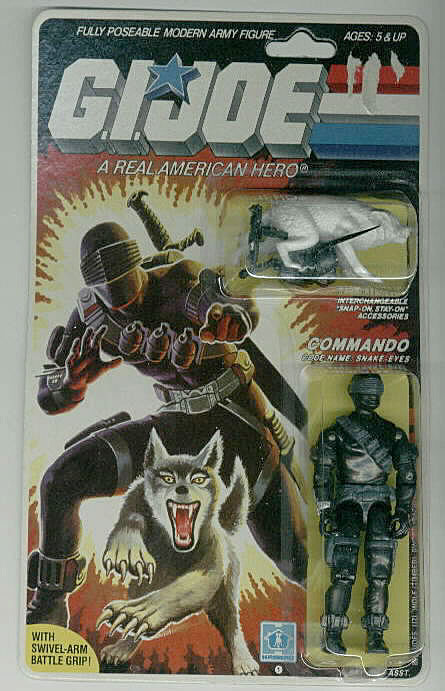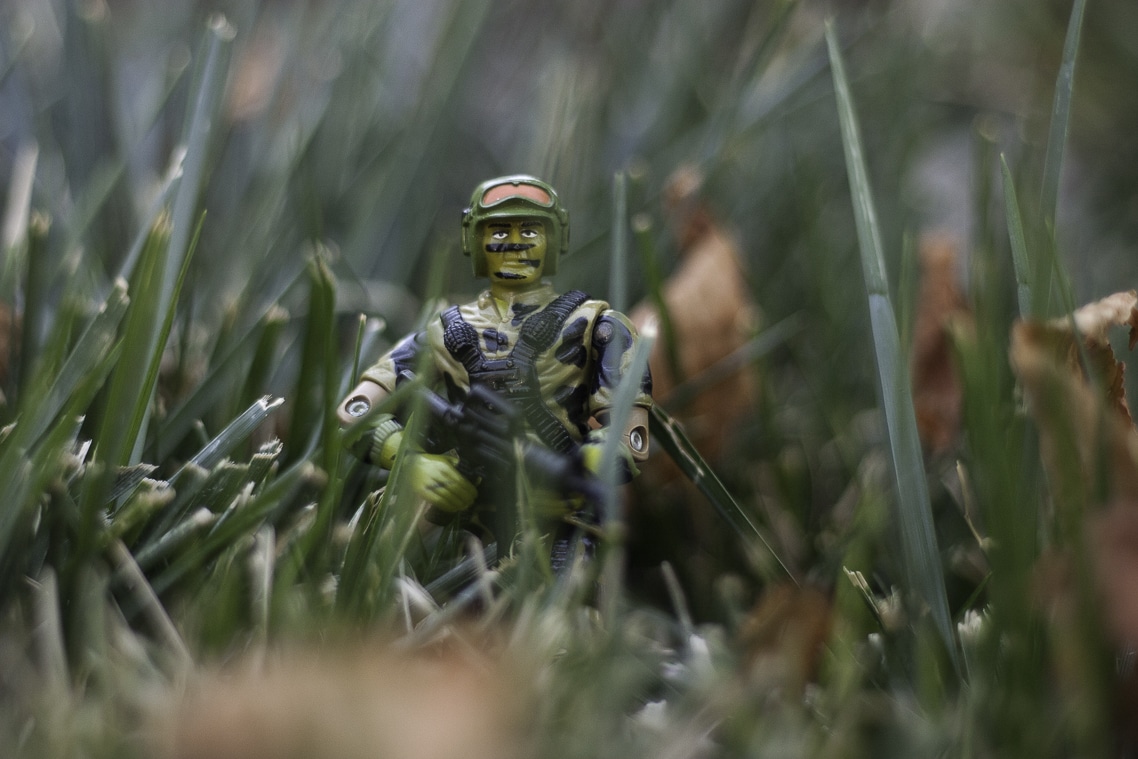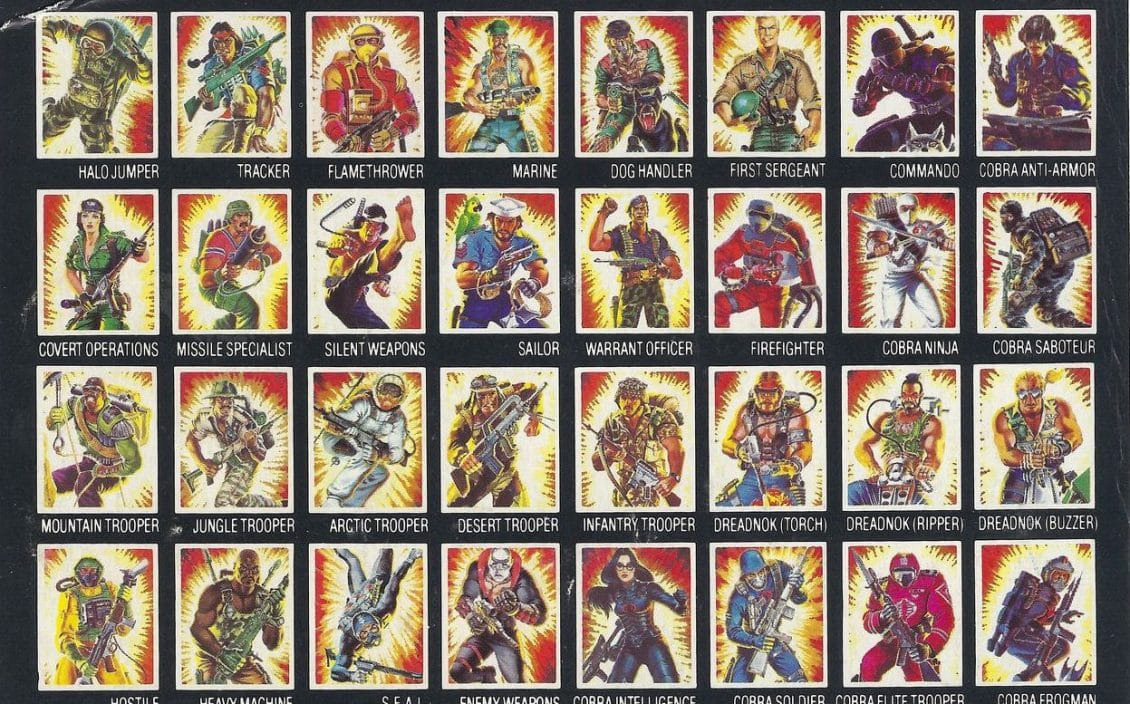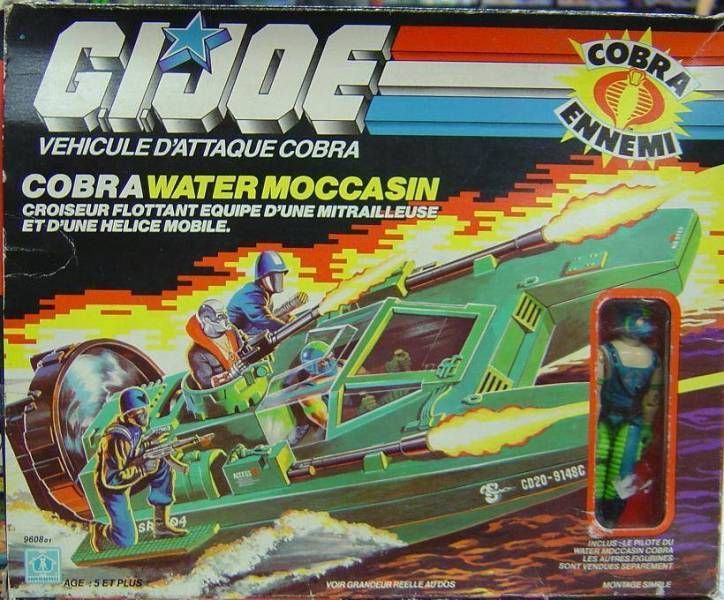Very few toy lines have the enduring impact of G.I. Joe.
With nerd culture fully in the mainstream and nostalgia being an undeniable economic factor, it’s time for us to know Joe, because–as old school Nerds fully understand–knowing is half the battle.
I should admit my bias up front: GI Joe is my most personal nerd obsession. To explain why GI Joe is tattooed so deep on my heart, you’ll need to indulge me in a little bit of an over-share. I’m an only child, raised by a single mom. In order to provide for me, I can remember my mom working multiple jobs, one being in retail, managing the toy section of a now-defunct department store, Murphey’s. Using her employee discount, my mom would bring me GI Joe figures all the time.
I had 124 GI Joe figures, including some of the obscure ones like Chuckles, as well as tons of the sweet vehicles and playsets. In addition to loving the cartoon, I’d spend 5-6 hours at a time, alone in my room like any card-carrying introvert is wont to do, setting up elaborate battle scenes. GI Joe more than anything else serves as a touchstone for my childhood. Sure, Snake Eyes was supposed to be the hero, but I really thought it was my hard-working mom who was the real hero.
So, let’s use this edition of Nerd Obsession to give you a mission briefing on GI Joe. Adjust your points of articulation to get comfortable in your chair and let’s dive in.
Timeline
- 1945: The name G.I. Joe came from an American war film called The Story of G.I. Joe, starring Ernie Pyle and Robert Mitchum.
- 1964: Toy creator Stan Weston thought that since Barbie was so popular, he could come up with a similar toy for boys: a line of Barbie-sized dolls with a military theme. He brought the concept to toy manufacturer Hassenfeld Brothers (which later shortened their name to Hasbro).
- 1982: The G.I. Joe product line had a highly successful relaunch in a smaller, 3.75-inch scale. The scale was the same scale used by the Kenner’s Star Wars figures, but with many more points of articulation that made them highly posable.
- 2009: The first feature film was released under the title, G.I. Joe: The Rise of Cobra. A second film, G.I. Joe: Retaliation was released in 2013.
- 2014: To celebrate the 50th anniversary of G.I. Joe, a new line of figures was released, using characters from the G.I. Joe: A Real American Hero cartoon series.
Quick Fact
G.I. stands for Government Issue.






Explain it to Me
The Heyday Was the 80s
You can’t understand GI Joe without understanding the cultural context of the 80s. Despite a nice run in the 60s, two reasons had driven the GI Joe toy line to be defunct by the late 70s:
- Rising oil prices meant that 12-inch plastic figures were too expensive to manufacture and
- the American public had soured on the military following the Vietnam War.
But you can’t keep a good Joe down, so in 1982, GI Joe was brought out of retirement as a smaller 3¾-inch line of action figures that was coupled with a multiple-front marketing campaign executed with military precision. For the first time, the Joes weren’t mere pieces of plastic, they were given the storyline of good guys locked in a battle with Cobra, the ultimate villains.
Sales soared.
Lasers Instead of Machine Guns
In 1983 Hasbro set its sights on TV, hiring Ron Friedman–veteran of Happy Days, The Andy Griffith Show, and Bewitched–to create a series. Friedman’s five-part G.I. Joe: A Real American Hero was followed by G.I. Joe: The Revenge of Cobra in 1984, then two seasons of the syndicated show (1985-86), before begin wrapped up with G.I. Joe: The Movie (1987).
But despite it being a military show, Friedman didn’t want to promote violence among children, he wanted to promote a wholly different set of values. Plus, parent groups didn’t want their children to see people being shot on a cartoon associated with a toy line.
So, when a plane is shot out of the sky, the next cut was them parachuting over the horizon. Sure, Cobra got their comeuppance, but it was not by standing at a graveside.
A Legacy of Service
Friedman and the other writers had complex feelings about a show that portrayed war and wanted it to leave a legacy of service while providing positive messages of inclusion, self-sacrifice and heroism. To this end, each episode ended with a PSA aimed at teaching kids values and morals. These ultimately became a popular and enduring part of the GI Joe lexicon, spawning the catchphrase, “Now you know…and knowing if half the battle.“
What’s more, there were female Joes right from the beginning and those characters like Lady Jaye and Scarlett had breasts and hips that were of normal proportions, choosing instead to treasure female characters’ strength and intelligence over the male gaze. There were lots of people of color and those Asian and African American Joes were of high of a rank and just as much in the thick of battle as any other Joes.
As a result, the GI Joe cartoon helped inspire countless men and women to become first responders, members of the armed services, and others who put themselves on the line for the greater good.
By the Numbers
$678,209,722: Box office haul of G.I. Joe: The Rise of Cobra.
375 million: The number of GI Joe action figures that is estimated to have been sold by Hasbro.
3.75 inches: The height of the iconic GI Joe Action figure.
155: The number of issues of Larry Hama’s iconic Marvel comic G.I. Joe: A Real American Hero at Marvel, but it continues on at IDW!
163: The number of GI Joe: A Real American Hero action figures.
Dunderheads! Imbeciles! Why are great men always surrounded by LESSER BEINGS!?
Person of Interest
The man who wrote the book on GI Joe.
Larry Hama was a Vietnam veteran who had just began to work at Marvel and pitched a SHIELD series in order to draw upon his background. He was turned down, but offered GI Joe as a consolation, a job that was considered the kiss of death, as no writer wanted to be associated with a toy line intellectual property.
At the time of the cartoon, FCC rules prohibited children’s programs from advertising their own brand of toys, so instead Hasbro advertised the G.I. Joe comic — to fantastic results. Hama’s comic–GI Joe: A Real American Hero–was a wildly successful comic, appearing at the top of 80s comic sales charts alongside The Amazing Spider-Man and Claremont’s X-Men.
The comic was praised for its attention to detail and realism in the area of military tactics and procedures, this due to Hama’s military experience (he was drafted into the U.S. Army Corps of Engineers during the Vietnam war) and the large amount of research he put into the book in order to be as up-to-date as possible.
But it was the soap-opera(y) nature of the book and the fact that the Joes were written as a family that ultimate made the comic be such a beloved read. Hama didn’t write the Joes as soldiers, he wrote them as people.
The comic also had moments of incredible artistry, such as G.I. Joe #21, titled “Silent Interlude”, which was told entirely without words or sound effects. (Our full story on that issue is here.)
There were also spin-off titles such as GI Joe: Special Missions and Larry Hama also wrote the majority of the file cards that appeared on the back of the action figure blister packs, which millions of kids cut out and kept along with their Joes.
Watch This!
If you have a spare 15 minutes…
TAKE ME DOWN THE ? HOLE!
Yo Joe! is an online database of every single GI Joe toy and action figure. A guide to fixing old GI Joes. The brand new 6 inch Classified Joes. All 163 GI Joe action figures ranked My list of my top 49 Gi Joes. Here is a YouTube series that does a deep dive into GI Joe's 80 history. This incredible interview tells the story of the GI Joe cartoon. Why playing with GI Joes might be good for your mental health.


